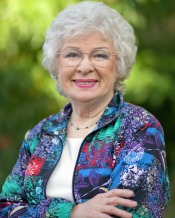She grew up in Atlanta, Georgia listening to often retold tales of the Civil War by veterans of that war and ancestors who survived it. Their stories had a lasting impact on her. In her youth her Irish Catholic mother, Mary Isabelle Stephens, advocated for the extension of voting privileges to women, perhaps influencing Margaret's decision to become a journalist and drop out of medical school.
Few women writers found work on newspapers, and those hired were only allowed to cover social events of interest to women. Her writing earned immediate acceptance and Mitchell a weekly column in the Atlanta Journal's Sunday Magazine, making her one of the first female columnists for the largest newspaper in the South.
She fully embraced the Jazz Age, writing as Peggy Mitchell in her column about the jazz bands and the current dance craze. It appears Margaret shook off society's restraints following her mother's death from the Spanish Flu in 1919. Her 1921 performance in a hotel of an Apache dance resulted in her being blackballed by the Junior League. You have to have grown up in the South to appreciate what a crushing blow this might have been to a young socialite. Junior Leaguers put on the best parties, teas and charity events, all gatherings Mitchell would normally have attended, and as an aspiring journalist, reported on.
Her hasty marriage in 1922 to Berrien "Red" Kinnard Upshaw, an abusive alcoholic, ended in an annulment in 1924 after Upshaw forcibly raped her. Think how many lives she might have changed had she gone public at the time, writing about spousal abuse and encouraging victims of brutality to escape and seek help, a missed opportunity that might have saved lives.
Mitchell married longtime friend John Marsh in 1925 and they enjoy almost twenty-five years of peaceful marital bliss. While a slow-to-heal broken ankle kept Margaret bedridden in 1926, Marsh encouraged her to try her hand at fiction, one of her dreams. Over the next three years her story of the ravages of war in the South came to life in laborious longhand.
Only a few close friends knew about her novel. She made no attempt to peddle it, claiming it was incomplete and unrevised until "angrily goaded into allowing the vice president of Macmillian, Harold Latham, to read the manuscript for Gone With the Wind, " Esther Lombardi reports in About.com Guide.
The author immediately had second thoughts but Latham, foreseeing a blockbuster, asked Margaret to write a Chapter One, and sent her a $50,000 advance. She finished the revision in March of 1936 and he released the book on June 30, 1936. He later sent Mitchell another $50,000 check and authorized an 18% bonus for all employees because the book sold more copies than any other book in history before. That first edition sold for $3.00 and contained 1,037 pages, over 408,000 words. Gone with the Wind has never been out of print. A special hardback 75th Anniversary Edition priced for $48.00 was released in May of 2011. Mitchell's descendents own the copyright.
Following the first publication, many male book reviewers gave the novel bad reviews. Only a few praised the book, but the public loved it and in 1937 Mitchell was awarded the Pulitzer Prize for Gone With the Wind. David O. Selznick's film based on the novel premiered in Atlanta on December 15th of 1939. In 1945 when I was still a child I waited with my older sisters for four long hours in a line that circled a city block to view for the first time the re-release of the blockbuster movie.
Mitchell lived a quiet life in Atlanta until her accidental death in 1949, after being struck while crossing the street with her husband to see the film A Canterbury Tale. Long after her death another manuscript of hers, Lost Laysen, was found among love letters to a suitor. She'd written the story about a romance in the South Pacific in 1916. The novel was posthumously published in 1996 by Simon and Schuster.
Margaret Mitchell's epic novel was written long before romantic suspense became a popular sub-genre, but her successful writing career and her numerous awards smoothed the way for other women writers to achieve recognition in their chosen field.


 RSS Feed
RSS Feed
